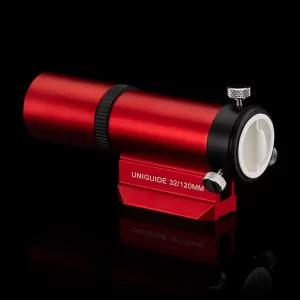Autoguiding cameras, guidescopes, and off-axis guiders are critical components in astrophotography setups, enhancing the accuracy of tracking and minimizing guiding errors. These tools work together to improve the quality of long-exposure astrophotographs.
Autoguiding cameras are specialized devices that monitor and guide the telescope during astrophotography. They are typically connected to either a guidescope or an off-axis guider. By continuously tracking a guide star and analyzing its movements, autoguiding cameras send feedback signals to the telescope’s mount, making precise adjustments to keep the guide star centred.
Guidescopes are small telescopes designed solely for autoguiding. Positioned alongside the primary imaging telescope, guidescopes have a wide field of view that allows them to capture a guide star near the main subject being photographed. The autoguiding camera attached to the guidescope captures images of the guide star, compares them to a reference image, and provides corrective signals to the telescope mount for accurate tracking.
Off-axis guiders, on the other hand, eliminate the need for a separate guidescope. These devices are placed in the optical path of the primary telescope and divert a small portion of light to the autoguiding camera. By incorporating a secondary mirror or prism, off-axis guiders allow the autoguiding camera to track a guide star while the remaining light continues to the imaging camera. This setup ensures that the guide star and the subject share the same optical path which eliminates differential flexure to enhancing tracking accuracy.
In conclusion, autoguiding cameras, guidescopes, and off-axis guiders are indispensable tools in astrophotography.










